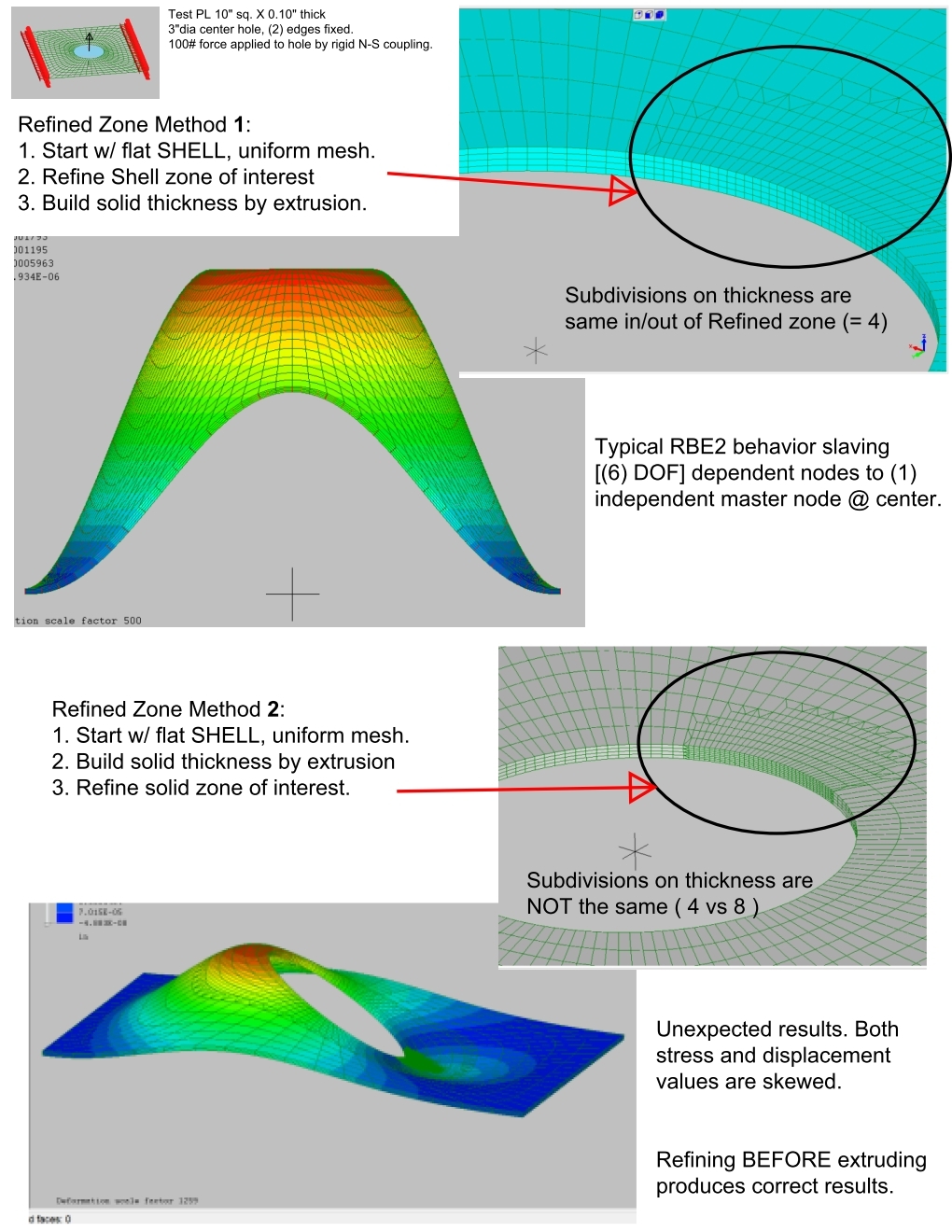N-S Coupling vs Refinement
Been investigating the use of RBE's in Mecway and other softwares. I may have stumbled across a potential pitfall when refining a model with Node-Surface Couplings (picture below). Pays to check displacements after the solve.
The issue seems to be when the coupled surface (e.g. hole perimeter) has a varying element resolution across the thickness -- like what you get when spot-refining a solid shape. Not sure of the causal mechanism that is skewing the results. The way I managed it was sub-optimal because I had to decide the local refinement before I extruded into a solid.
Comments? Anyone else experience this?

Howdy, Stranger!
It looks like you're new here. If you want to get involved, click one of these buttons!


Comments
The fact that it depends on the order of refine and extrude suggests something's wrong with the mesh.
Are you sure the reference node is still at the center? If you create it with Insert node between on the non-uniform mesh, it won't be at the center.
Is the rigid coupling trying to act like an RBE3 (distributed), with the weighted average of extra lever arms over the Refine spot thickness becoming a factor? Just guessing here.
Mecway just exports the surface to CCX as nodes without weights, so there's no clever accounting for the areas of the faces. But pyramids are really collapsed hexes in CCX so maybe those duplicate nodes somehow mess up the rigid body MPCs.
Thanks for discovering this, cwharpe. It's an insidious bug.
I also tried *COUPLING with *KINEMATIC instead of *RIGID BODY but it's no better.
Thanks.